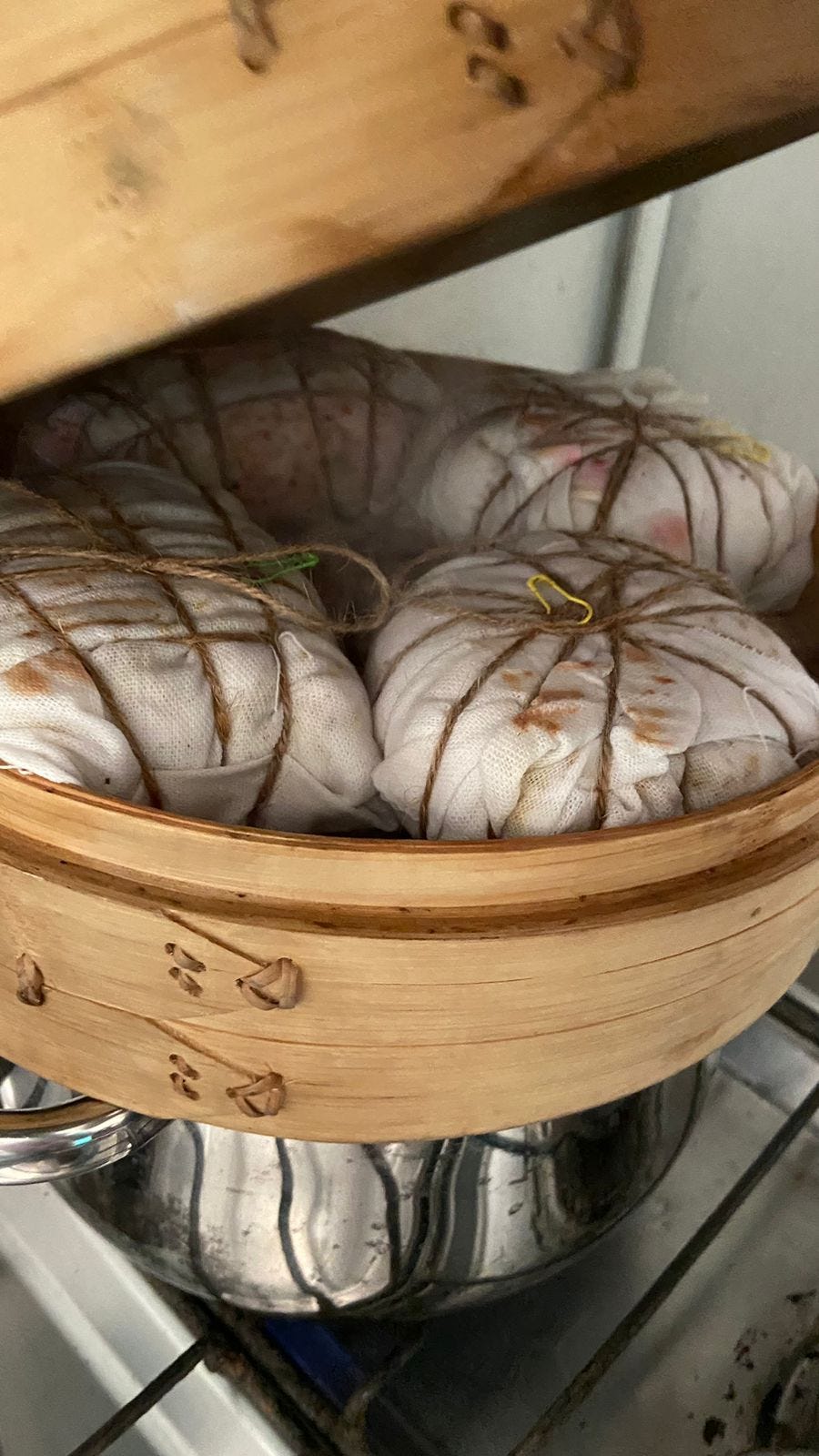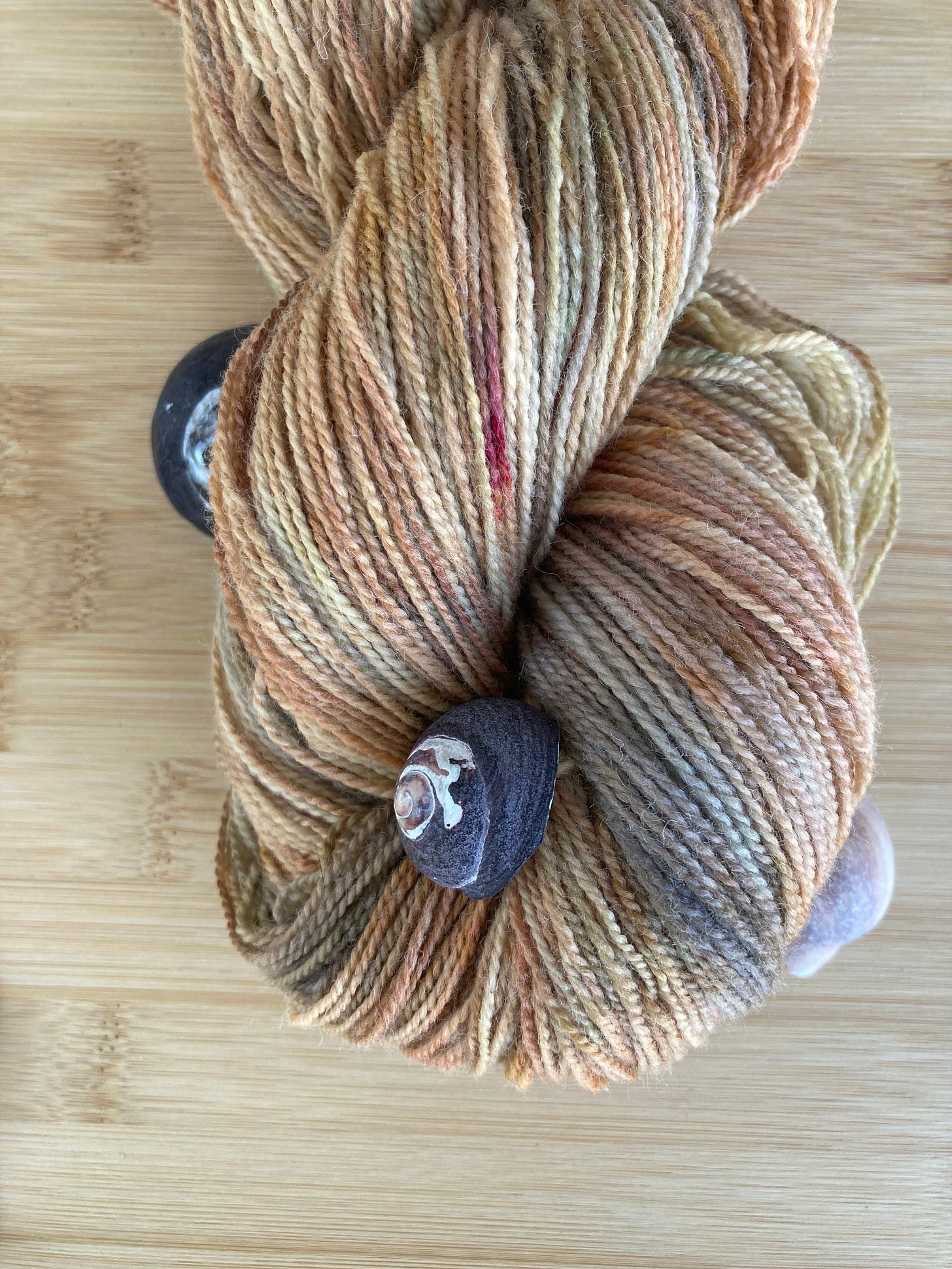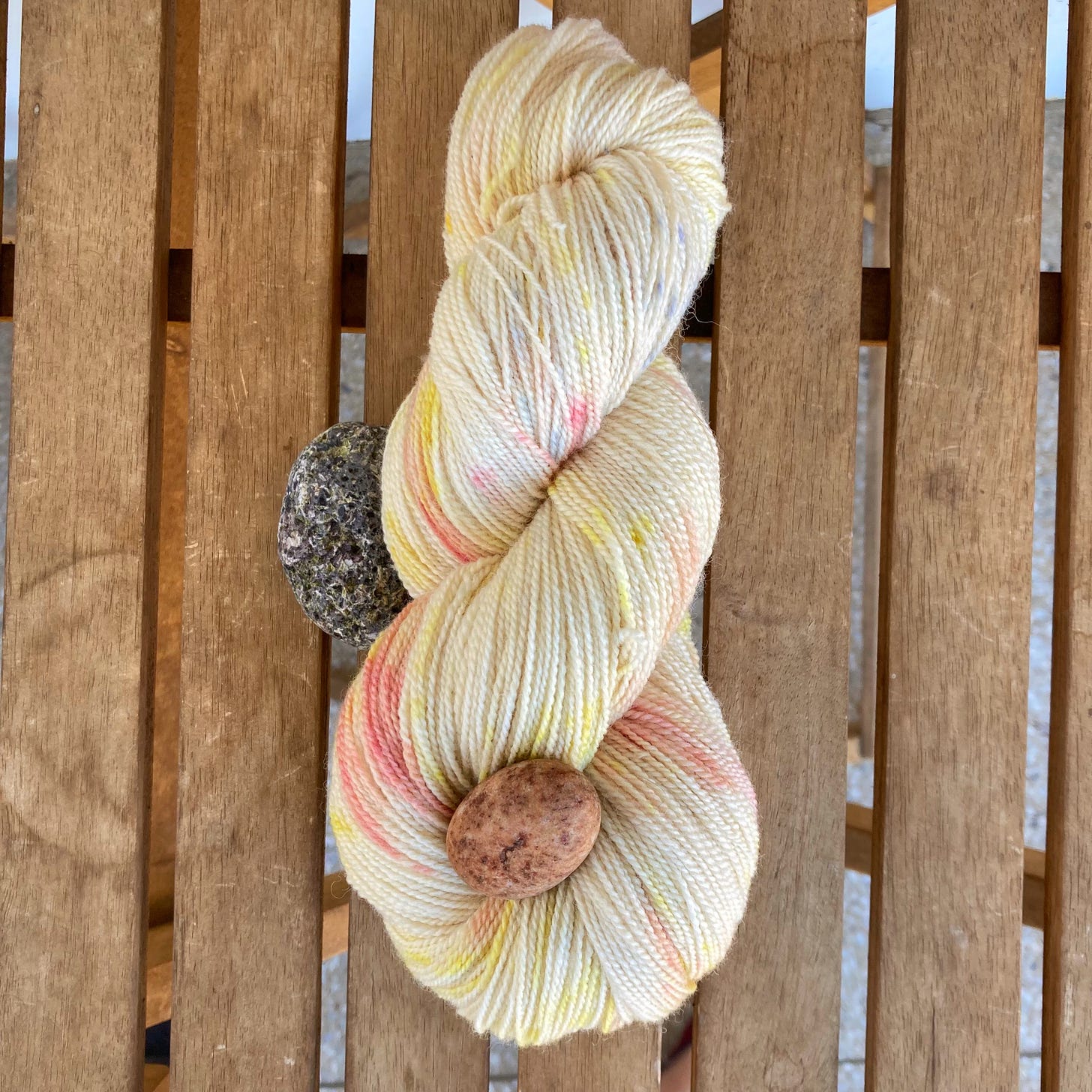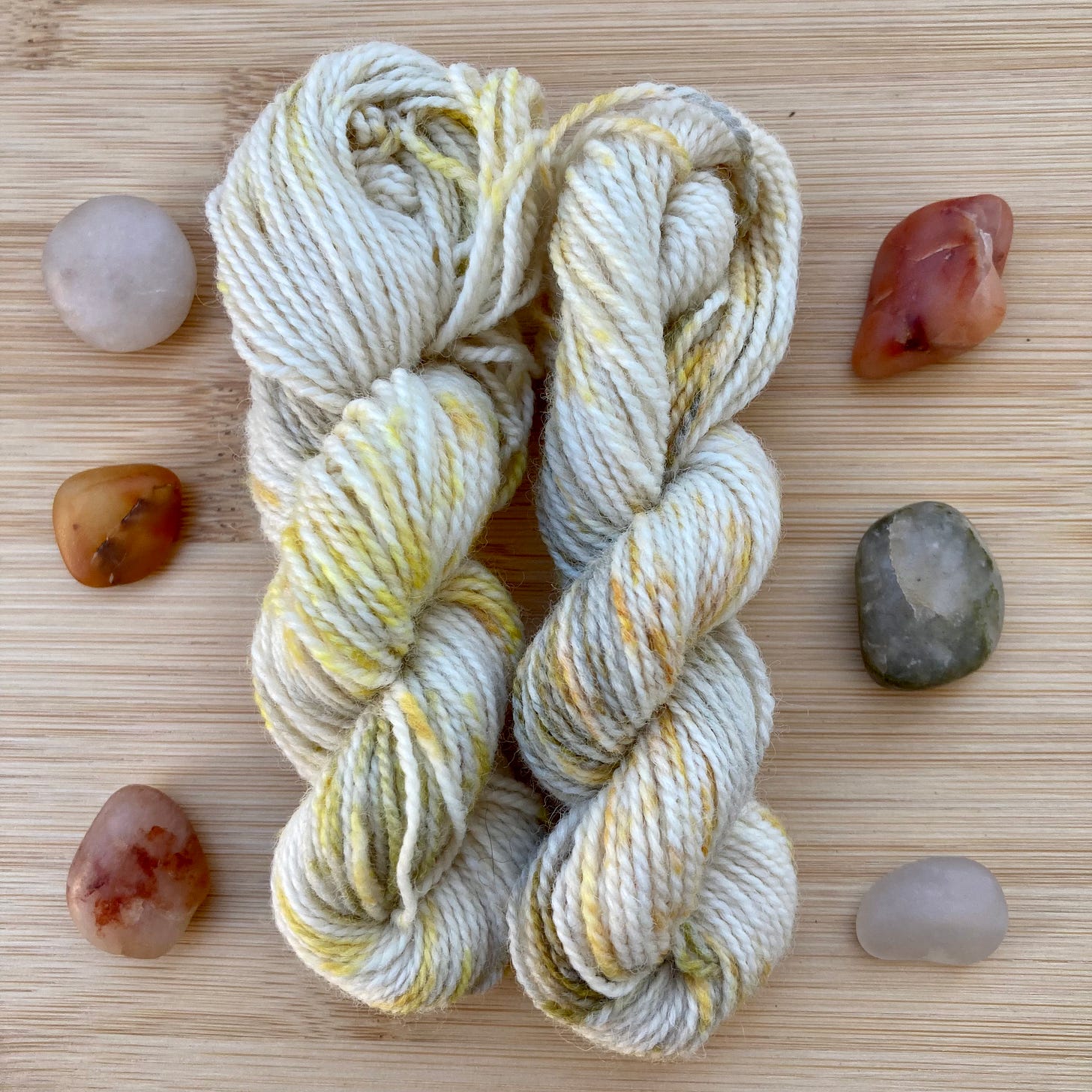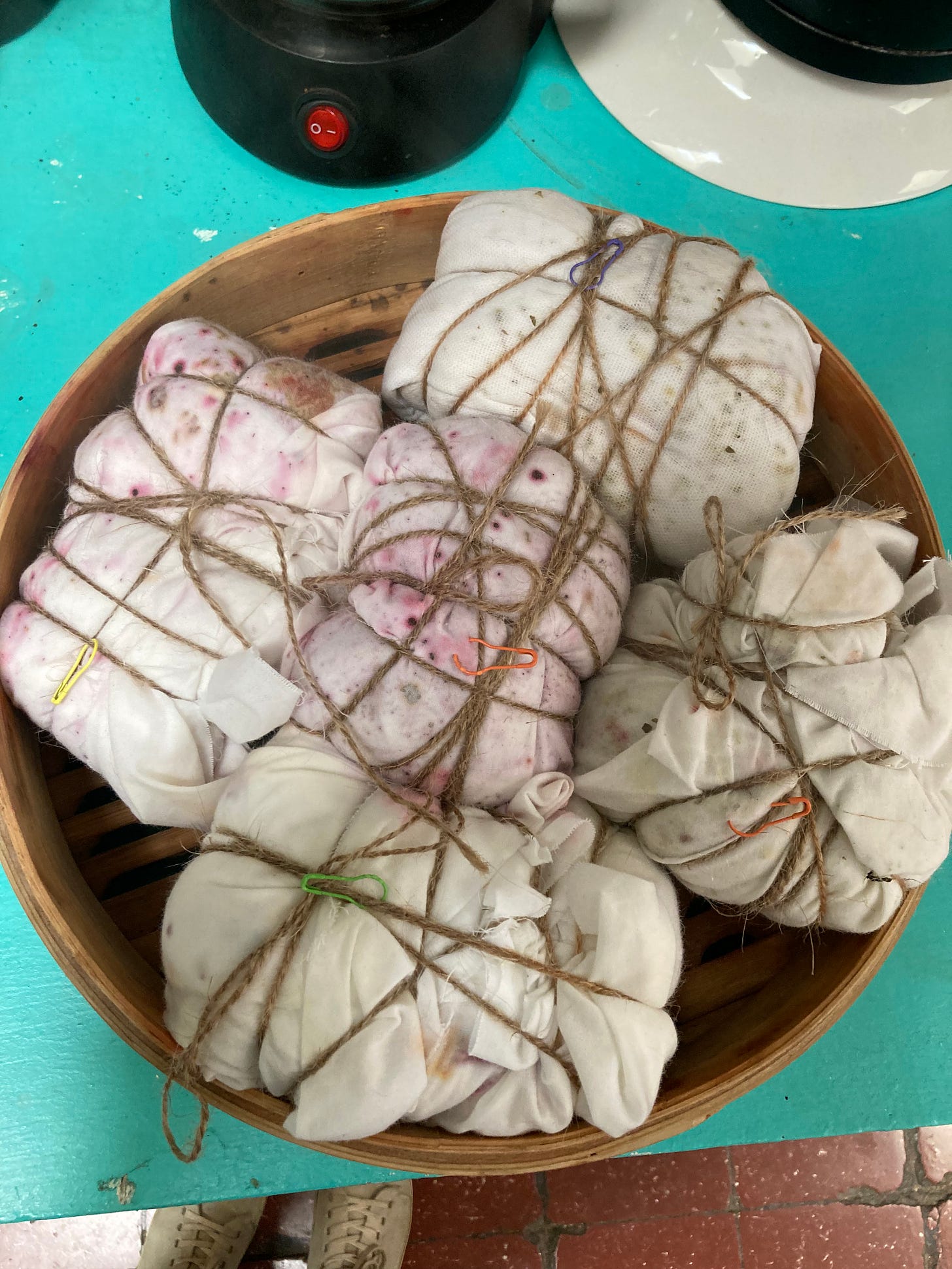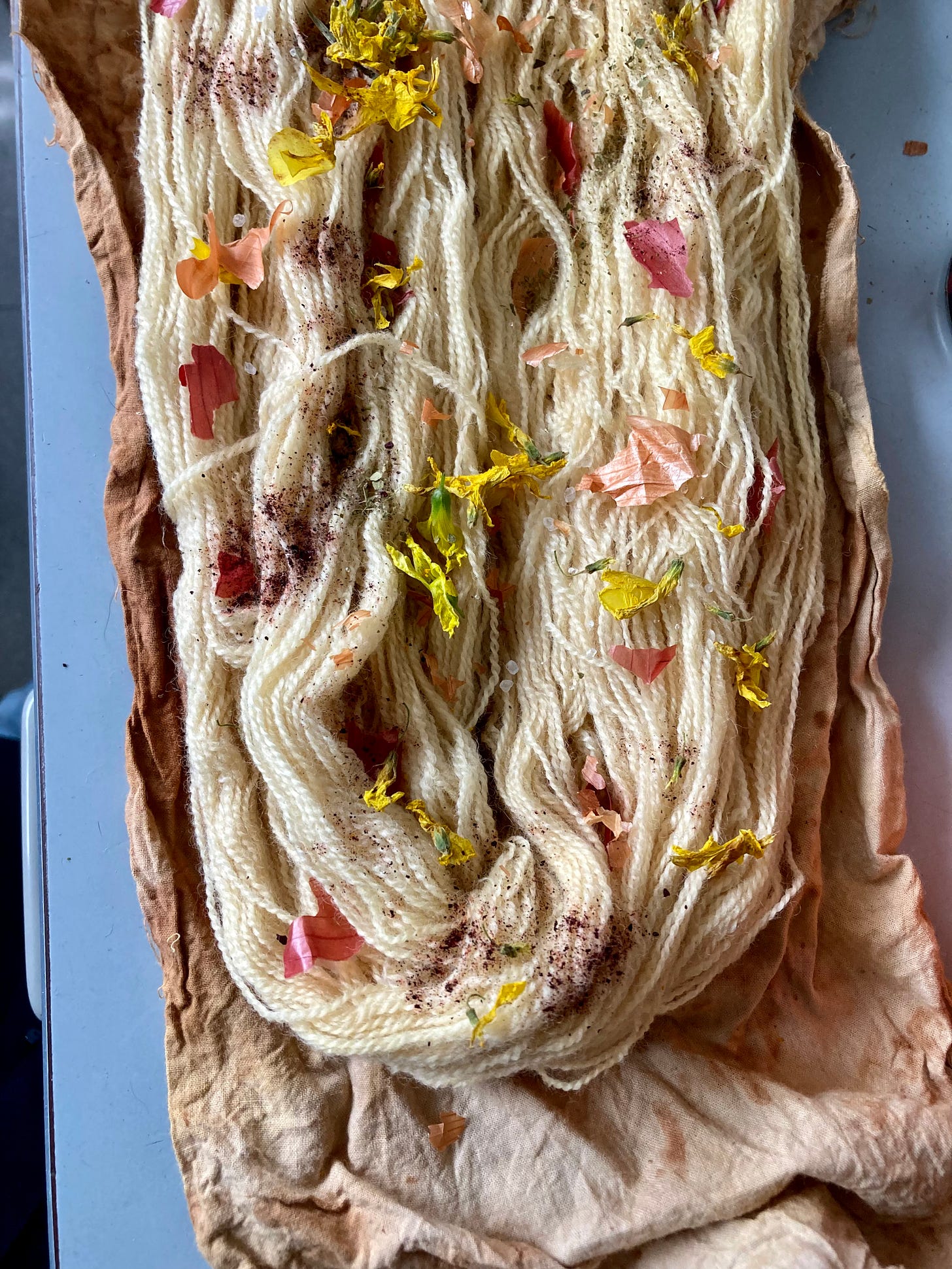This newsletter has English and Spanish versions. To choose which language you receive, visit your settings on Substack, find this newsletter under Subscriptions, and select the language(s) you want.
Leer en español aquí.
Bundle dyeing has become a focus of my natural dye practice, both personally and as a small business. It’s a process I love, and one that fits well with the needs and values of my practice. Since I’ve recently started teaching workshops with this technique, I wanted to share more about why I love it so much.
Bundle dyeing is a relatively quick and easy process that captures the most fun and surprising parts of natural dyeing. Any dye project contains some level of unpredictability- soil quality, water quality, and weather conditions are just a few variables influencing the final color result that are hard to completely control. With bundle dyeing, there’s also the interactions between different dye materials bundled together, which can lead to color surprises, as well as the fact that while the yarns are bundled up and steaming, you can’t see how the project looks as a whole. This is a big part of the appeal for me: I feel more free creatively when I don’t have to worry about planning every decision perfectly. I love releasing some control over the process to variables I can’t control and embracing the element of surprise. I don’t really feel like I “make” or “create” colors- the colors are already inside the plants I choose to work with, and my work is to reveal them, understanding that some of the choices I made while extracting the color will affect the final result. Bundle dyeing uses pressure to release color directly onto fiber, so this revelation is very immediate.
Bundle dyed yarns always have an element of chance at play, so they are truly one of a kind. They are also a good way to visualize local and/or seasonal color palettes. Bundle dyes are unique to the place where the materials were collected. I use a combination of kitchen dyes, foraged dyes, and a few strategic purchases, but the combination is always a reflection of the materials that are easily available to me in Viña del Mar. In July, I’ll be doing a bundle dye workshop in Ohio and I’m excited to compare results between the two cities I consider home.
Bundle dyes are also unique to the season in which the materials were collected. Many flowers and leaves I forage are only available seasonally. Right now, when quintral flowers are blooming in late austral summer, my bundle dyes are full of orange and brown tones that I can only create at this time of year. Since quintral flowers give less color when dried, I don’t save them very long. I collect what I can in summer and use up my supply by fall. I also wait for neon yellow oxalis flowers to appear in early spring, brightening the palette of speckled yarn made during August and September. Even plants available year round might give slightly different colors depending on the season- yellow onions are different in summer and winter here, and the winter onion skins give slightly oranger tones.
Even within the same city and season, no two skeins will ever come out exactly alike. The placement of the dye materials in the yarn, even if I try to plan it out, will always be somewhat random once the yarn is rolled into a bundle. I can think of a few ways I might be able to control the end result more, but while I’m mildly curious I mostly prefer not to- the element of chance and unpredictability is a big part of why I enjoy working with natural dyes. While I try to learn more about the process, it’s more about gaining understanding of dye plants and dye processes rather than trying to have control over the end result. While I’m preparing the bundle dyes, I rely on intuition to decide which materials to use in each skein and how much, enjoying the freedom of the process.
In the studio: bundle dyeing to save resources
I’ve increasingly focused on bundle dyeing not only because the results are stunning (and tend to be my best selling yarns) but also because it is one of the most efficient natural dyeing techniques in terms of resource use. With immersion dyeing, the dye bath needs to be big enough to hold all the yarn and allow it space to move freely in the pot, but my bundle dyed skeins are steamed, so I can use a smaller pot and pack as many skeins as will fit into the steamer. Bundle dyes don’t need to move freely because the technique uses pressure to directly apply color: both an efficient extraction of color, resulting in deeply saturated speckles that maximize a plant’s color potential, and an efficient use of space, as the bundled skeins are tightly wound to apply pressure to the plants and therefore take up less space.
This is an especially great technique for using dye plants like wildflowers, which I may not be able to collect responsibly in large quantities (I always leave plenty for the pollinators!), as well as dyestuffs like cochineal which I purchase and can be expensive. A little bit goes a long way in bundle dyeing.
I use the same water for wetting out the skeins, steaming, and rinsing afterwards. At the end of the process, I then use it to water plants. Bundle dyeing is somewhat heat intensive, as the water is kept boiling for one hour, but one hour is a relatively short time for a natural dye bath. When bundle dyeing yarn, I typically use materials that release color easily (I get better results this way) so a longer dyeing time is not necessary. Planning ahead and cold mordanting before dyeing can also save energy. Since the energy source available to me for dyeing is natural gas, minimizing my use of this fossil fuel to lower the environmental impact is another important goal.
News
I love bundle dyeing for so many reasons- artistic, practical, ecological- and I’m absolutely thrilled to start offering workshops teaching this technique. My first workshop was on March 25 in Valparaíso and was a wonderful experience! In July I’m offering both bundle dyeing and indigo vat workshops at Behind the Pines. If you’re interested in a workshop, either in person in Chile or Ohio or online from anywhere, I would love to know as I am hoping to teach more this year! Let me know in the comments or reply to this email.
My next in person event is the Expo Teje in Santiago, April 22-23. I’ll have a new batch of naturally dyed speckles and some indigo blues, in addition to my current collections on Merino and Corriedale bases.
You can follow me on Instagram, Pinterest and the Making app to see more natural dyeing and other making. My yarn is always available at neblinawool.com.
Finally, if you enjoy this newsletter, please subscribe to receive it in your inbox or share it with someone else who would like it!



